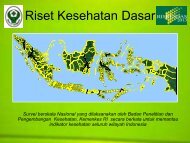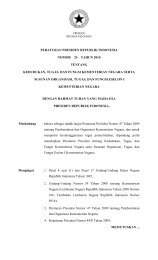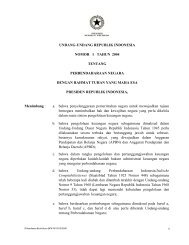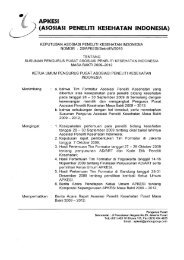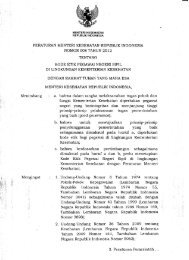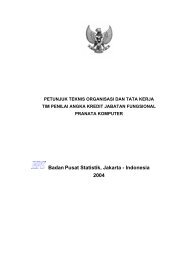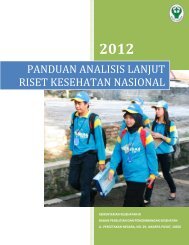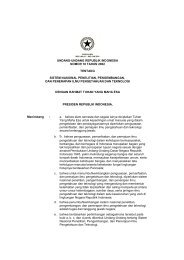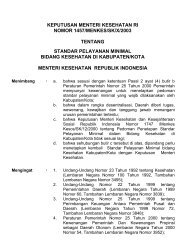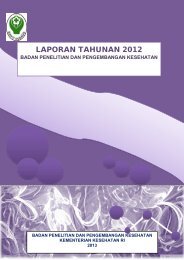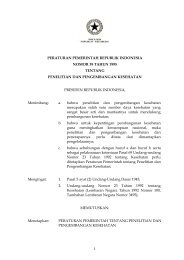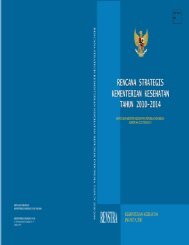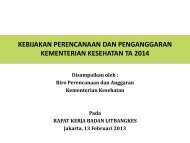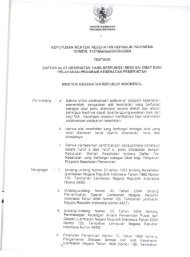Download Profil Badan Litbang Kesehatan 2012
Download Profil Badan Litbang Kesehatan 2012
Download Profil Badan Litbang Kesehatan 2012
- No tags were found...
You also want an ePaper? Increase the reach of your titles
YUMPU automatically turns print PDFs into web optimized ePapers that Google loves.
Loka <strong>Litbang</strong> P2B2 BaturajaZoonoses Research Office, BaturajaBionomik Vektor Malaria Berdasarkan Topografi Wilayah di Provinsi Jambi Tahun2010Malaria Vector Bionomic Based on Topography in Jambi Region in The Year 2010setempat dalam melaksanakan penanggulanganfilariasis.Penelitian dilaksanakan di 2 desa yangyaitu Desa Lubuk Ruso dan Desa Rasau.Dari pengamatan entomologi yang dilakukan,diperoleh hasil bahwa jenis nyamukyang dominan tertangkap adalah Mansoniabonneae, Mansonia uniformis dan Anophelesnigerrimus. Setelah dilakukan pembedahanpada nyamuk yang tertangkap di lokasi,sebelumnya dipelihara selama 12 hari, tidaksatupun ditemukan nyamuk yang mengandungmikrofilaria.Dari seratus penduduk yang diambildarah di Desa Rasau, ditemukan 4 orangpositif mikrofilaria Brugia malayi, sedangkandi Desa Lubuk Ruso tidak ada yangpositif. Ditemukan juga 2 ekor kucing disekitar rumah penderita yang positif mikrofilaria.Sampai saat ini masih terus dilakukanpengamatan pada 3 desa lainnya.Manfaat yang diperoleh dari penelitianini adalah hasilnya dapat dijadikanbahan pertimbangan bagi dinas kesehatanThe experiment was conducted intwo villages, they are Lubuk Ruso and RasauVillages. Entomology observations obtainedresults that the dominant mosquitospecies are bonneae Mansonia, Anophelesand Mansonia uniformis nigerrimus. Aftersurgery on the mosquitoes caught atthe site, previously maintained for 12 days,none of the mosquitoes found to contain microfilariae.Of blood taken one hundred inhabitantsin the village of Rasau, 4 people werefound to be Brugia malayi microfilariaepositive, while in the village of Lubuk Rusono one was positive, although 2 cats aroundthe homes of people hadpositive microfilariae.Until now we still have not made observationson three other high risk villages.The benefits derived from this studyare the result can be considered for the localhealth department in implementing thefilariasis control.<strong>Profil</strong> Balitbangkes51



